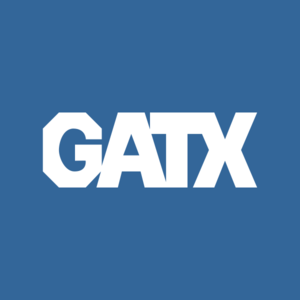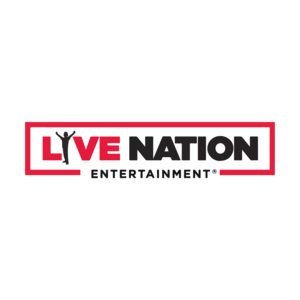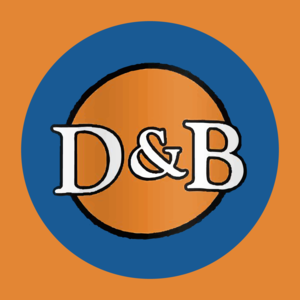
Dave & Buster's (PLAY)
Dave & Buster's keeps us up at night. Its sales have underperformed and its low returns on capital show it has few growth opportunities.― StockStory Analyst Team
1. News
2. Summary
Why We Think Dave & Buster's Will Underperform
Founded by a former game parlor and bar operator, Dave & Buster’s (NASDAQ:PLAY) operates a chain of arcades providing immersive entertainment experiences.
- Annual revenue growth of 19.8% over the last five years was below our standards for the consumer discretionary sector
- Poor expense management has led to an operating margin that is below the industry average
- Depletion of cash reserves could lead to a fundraising event that triggers shareholder dilution


Dave & Buster’s quality is not up to our standards. We believe there are better businesses elsewhere.
Why There Are Better Opportunities Than Dave & Buster's
High Quality
Investable
Underperform
Why There Are Better Opportunities Than Dave & Buster's
Dave & Buster’s stock price of $17.31 implies a valuation ratio of 17.8x forward P/E. Dave & Buster’s multiple may seem like a great deal among consumer discretionary peers, but we think there are valid reasons why it’s this cheap.
Our advice is to pay up for elite businesses whose advantages are tailwinds to earnings growth. Don’t get sucked into lower-quality businesses just because they seem like bargains. These mediocre businesses often never achieve a higher multiple as hoped, a phenomenon known as a “value trap”.
3. Dave & Buster's (PLAY) Research Report: Q2 CY2025 Update
Arcade company Dave & Buster’s (NASDAQ:PLAY) fell short of the market’s revenue expectations in Q2 CY2025, with sales flat year on year at $557.4 million. Its non-GAAP profit of $0.40 per share was 56.6% below analysts’ consensus estimates.
Dave & Buster's (PLAY) Q2 CY2025 Highlights:
- Revenue: $557.4 million vs analyst estimates of $562.7 million (flat year on year, 0.9% miss)
- Adjusted EPS: $0.40 vs analyst expectations of $0.92 (56.6% miss)
- Adjusted EBITDA: $129.8 million vs analyst estimates of $137.9 million (23.3% margin, 5.9% miss)
- Operating Margin: 9.5%, down from 15.2% in the same quarter last year
- Same-Store Sales fell 3% year on year (-6.3% in the same quarter last year)
- Market Capitalization: $817.4 million
Company Overview
Founded by a former game parlor and bar operator, Dave & Buster’s (NASDAQ:PLAY) operates a chain of arcades providing immersive entertainment experiences.
The Dave & Buster's experience is centered around “playing to win”, where customers purchase credits to play games and earn tickets that can redeemed for various prizes. The company’s venues typically feature a gaming floor, a sports bar with large-screen TVs airing live sporting events, and a dining section featuring a diverse menu of American favorites and cocktails.
Through these three areas, Dave & Buster's caters to multiple customer segments including families looking for a fun day out, young adults seeking social activities (some evenings feature 21+ only events), and companies organizing team-building events or corporate parties.
Dave & Buster's employs various marketing initiatives such as digital advertising and promotional events to reach customers and incentivize customer spending across the company’s food, beverage, and entertainment offerings. The company also offers loyalty programs and special packages to attract repeat business and enhance customer engagement.
4. Leisure Facilities
Leisure facilities companies often sell experiences rather than tangible products, and in the last decade-plus, consumers have slowly shifted their spending from "things" to "experiences". Leisure facilities seek to benefit but must innovate to do so because of the industry's high competition and capital intensity.
Dave & Buster’s competitors include Bowlero (NYSE:BOWL), TopGolf Callaway (NYSE:MODG), Six Flags (NYSE:SIX), and private company Barcade.
5. Revenue Growth
A company’s long-term performance is an indicator of its overall quality. Even a bad business can shine for one or two quarters, but a top-tier one grows for years. Over the last five years, Dave & Buster's grew its sales at a solid 19.8% compounded annual growth rate. Its growth beat the average consumer discretionary company and shows its offerings resonate with customers.
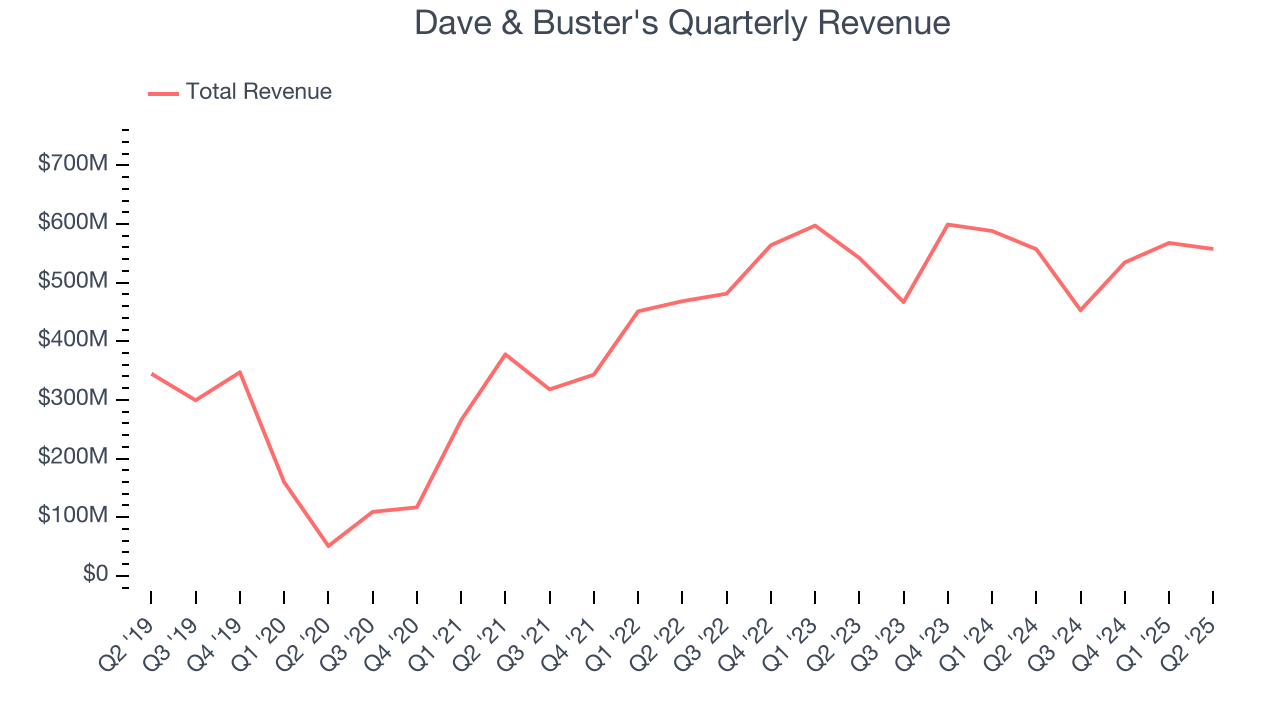
Long-term growth is the most important, but within consumer discretionary, product cycles are short and revenue can be hit-driven due to rapidly changing trends and consumer preferences. Dave & Buster’s recent performance marks a sharp pivot from its five-year trend as its revenue has shown annualized declines of 1.7% over the last two years. Note that COVID hurt Dave & Buster’s business in 2020 and part of 2021, and it bounced back in a big way thereafter. 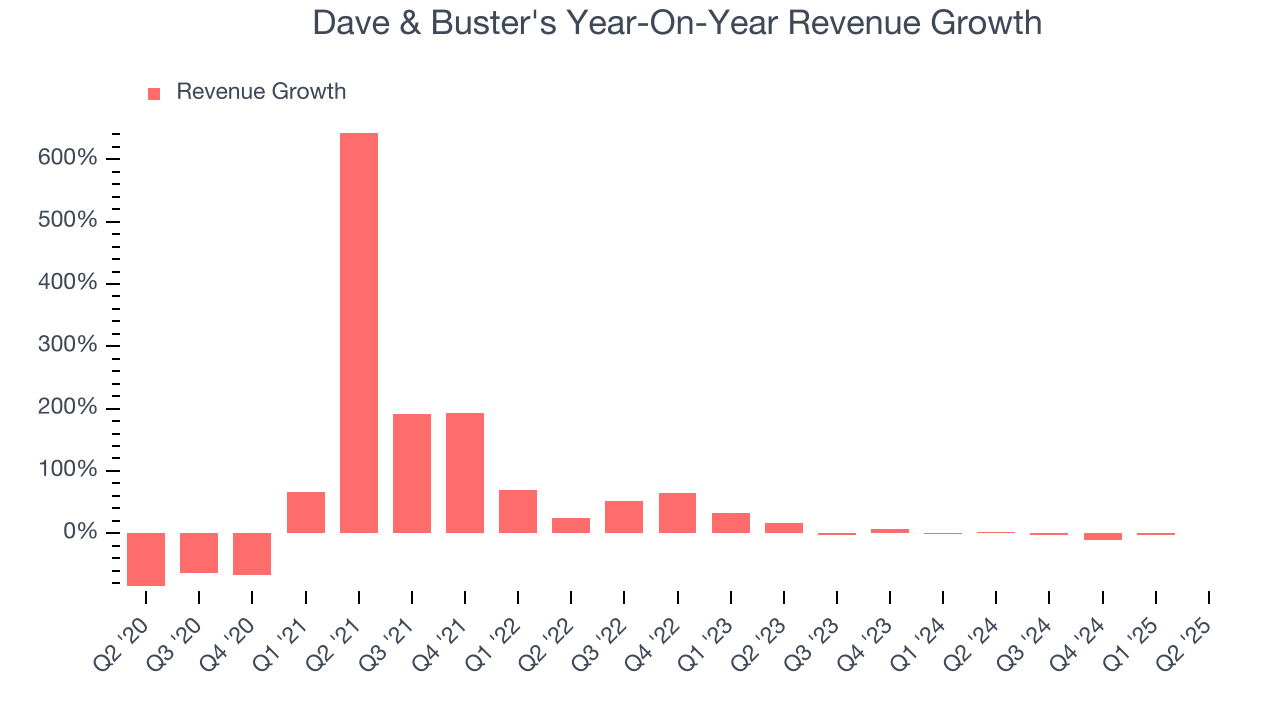
Dave & Buster's also reports same-store sales, which show how much revenue its established locations generate. Over the last two years, Dave & Buster’s same-store sales averaged 6.9% year-on-year declines. Because this number is lower than its revenue growth, we can see the opening of new locations is boosting the company’s top-line performance. 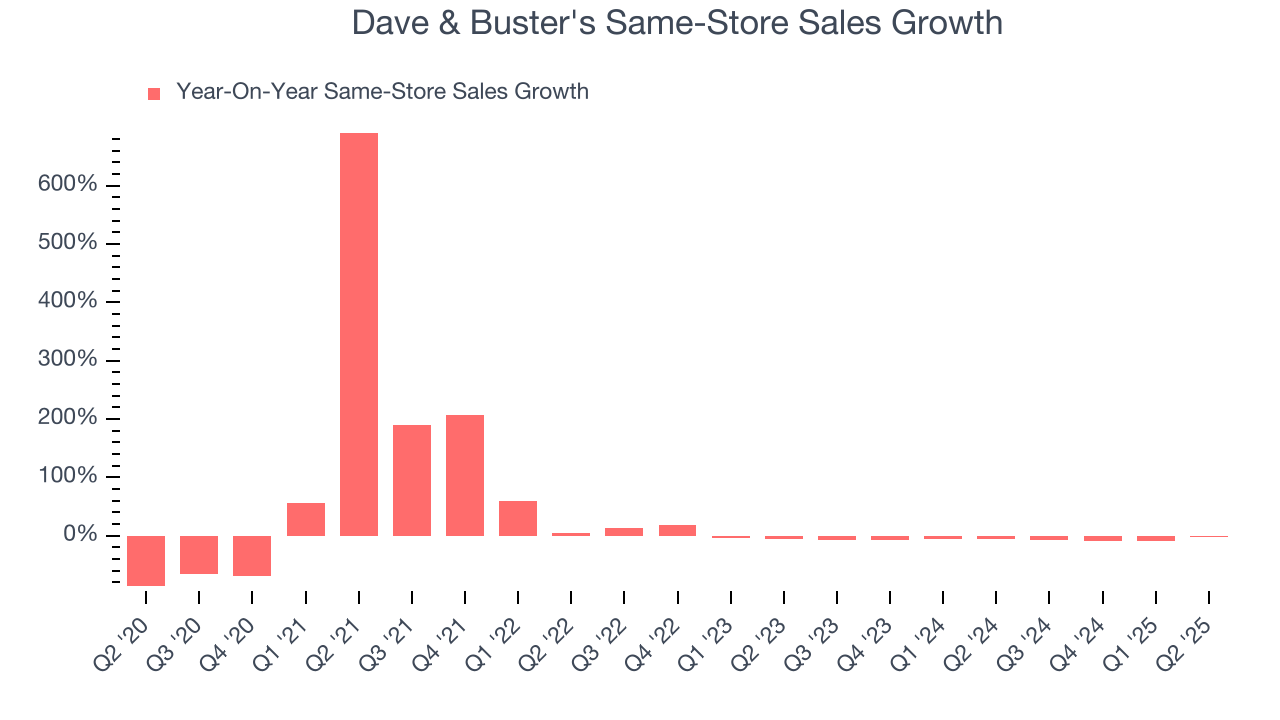
This quarter, Dave & Buster’s $557.4 million of revenue was flat year on year, falling short of Wall Street’s estimates.
Looking ahead, sell-side analysts expect revenue to grow 5.8% over the next 12 months. While this projection implies its newer products and services will catalyze better top-line performance, it is still below average for the sector.
6. Operating Margin
Dave & Buster’s operating margin has been trending down over the last 12 months, but it still averaged 10.3% over the last two years, decent for a consumer discretionary business. This shows it generally does a decent job managing its expenses, and its solid historical revenue growth also suggests its margin dropped because it ramped up investments to capture market share. We’ll keep a close eye to see if this strategy pays off.
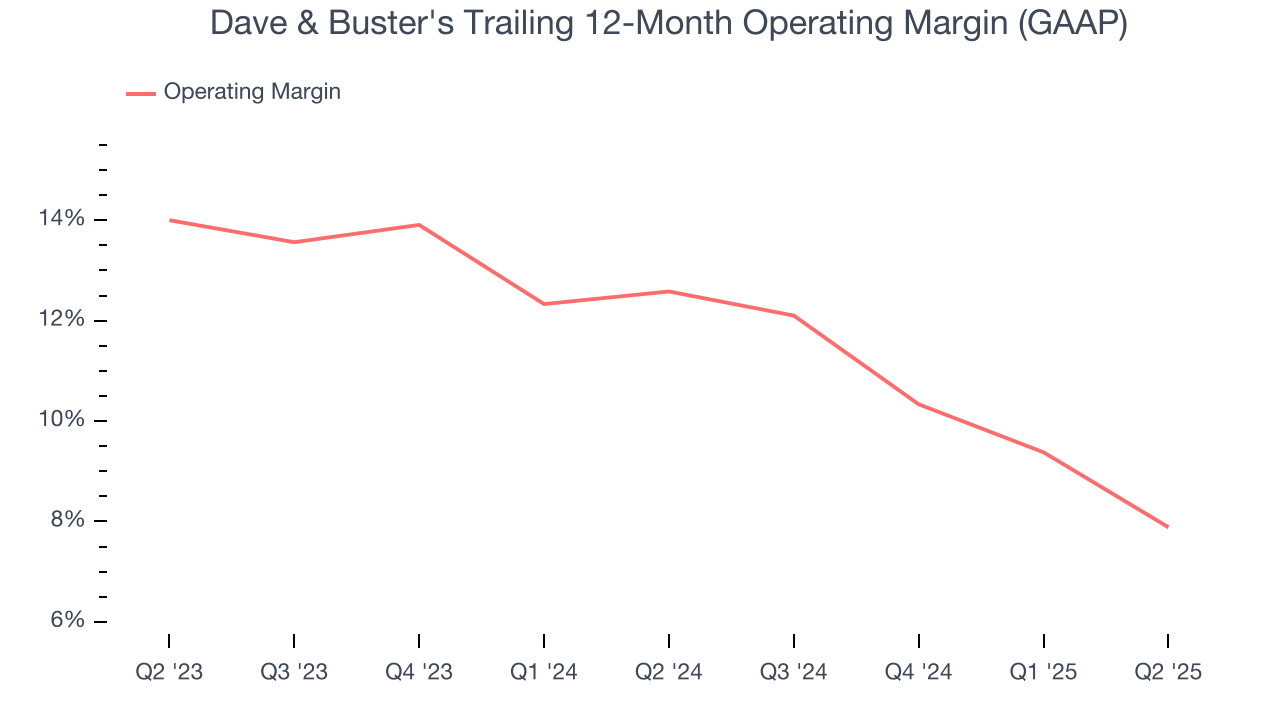
This quarter, Dave & Buster's generated an operating margin profit margin of 9.5%, down 5.7 percentage points year on year. This contraction shows it was less efficient because its expenses increased relative to its revenue.
7. Earnings Per Share
We track the long-term change in earnings per share (EPS) for the same reason as long-term revenue growth. Compared to revenue, however, EPS highlights whether a company’s growth is profitable.
Dave & Buster’s full-year EPS flipped from negative to positive over the last five years. This is encouraging and shows it’s at a critical moment in its life.
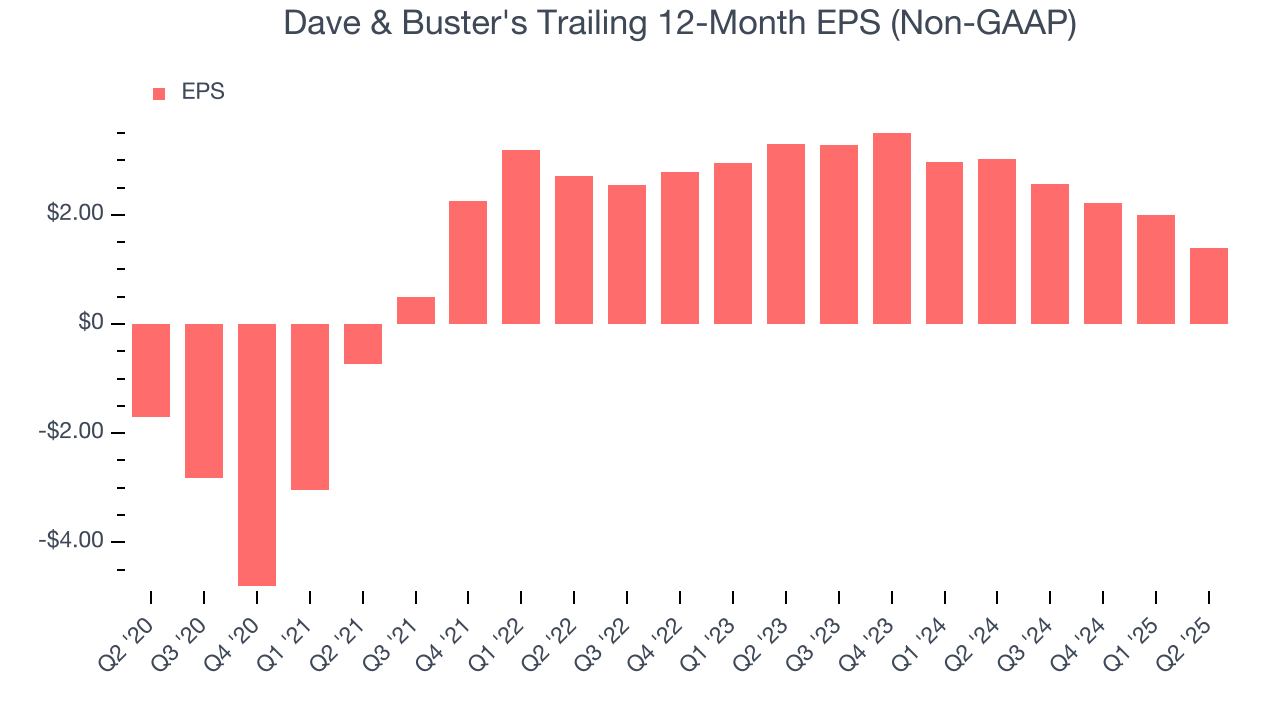
In Q2, Dave & Buster's reported adjusted EPS of $0.40, down from $0.99 in the same quarter last year. This print missed analysts’ estimates, but we care more about long-term adjusted EPS growth than short-term movements. Over the next 12 months, Wall Street expects Dave & Buster’s full-year EPS of $1.40 to grow 42.5%.
8. Cash Is King
If you’ve followed StockStory for a while, you know we emphasize free cash flow. Why, you ask? We believe that in the end, cash is king, and you can’t use accounting profits to pay the bills.
Over the last two years, Dave & Buster’s demanding reinvestments to stay relevant have drained its resources, putting it in a pinch and limiting its ability to return capital to investors. Its free cash flow margin averaged negative 8.1%, meaning it lit $8.10 of cash on fire for every $100 in revenue.
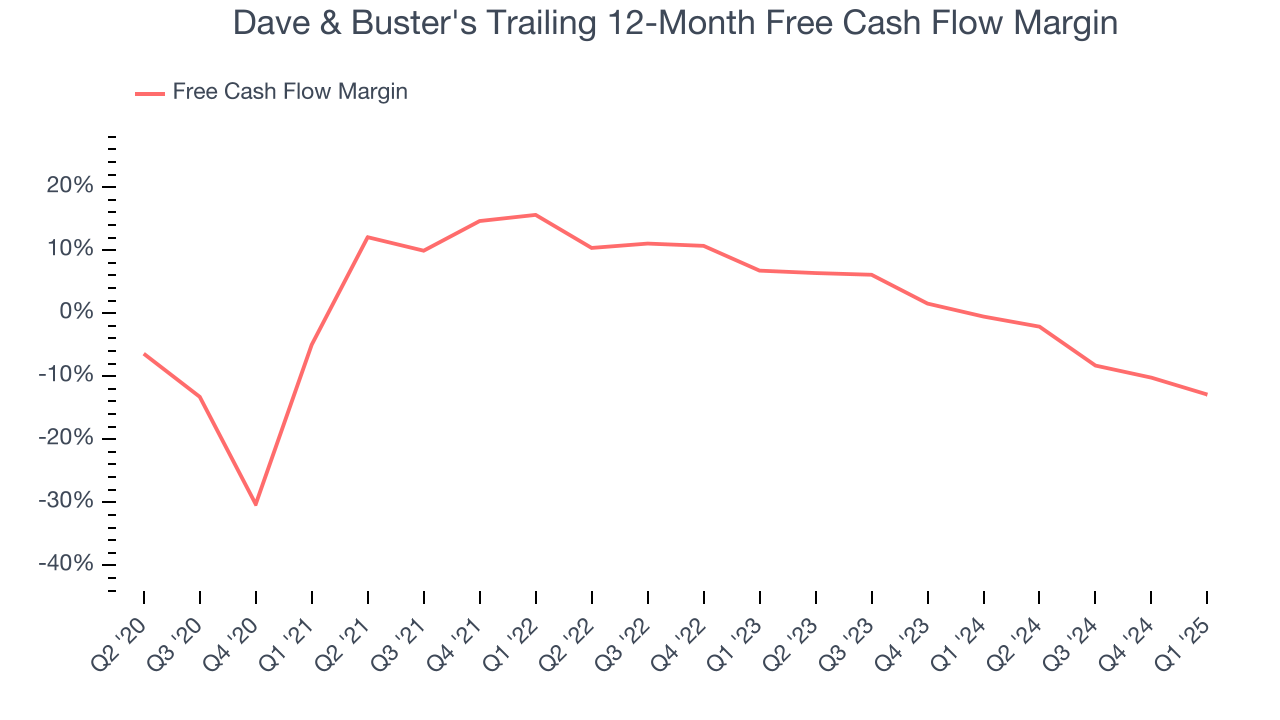
9. Return on Invested Capital (ROIC)
EPS and free cash flow tell us whether a company was profitable while growing its revenue. But was it capital-efficient? Enter ROIC, a metric showing how much operating profit a company generates relative to the money it has raised (debt and equity).
Dave & Buster's historically did a mediocre job investing in profitable growth initiatives. Its five-year average ROIC was 12.3%, somewhat low compared to the best consumer discretionary companies that consistently pump out 25%+.
We like to invest in businesses with high returns, but the trend in a company’s ROIC is what often surprises the market and moves the stock price. Unfortunately, Dave & Buster’s ROIC has stayed the same over the last few years. If the company wants to become an investable business, it must improve its returns by generating more profitable growth.
10. Balance Sheet Risk
As long-term investors, the risk we care about most is the permanent loss of capital, which can happen when a company goes bankrupt or raises money from a disadvantaged position. This is separate from short-term stock price volatility, something we are much less bothered by.
Dave & Buster’s $3.09 billion of debt exceeds the $12 million of cash on its balance sheet. Furthermore, its 7× net-debt-to-EBITDA ratio (based on its EBITDA of $461.4 million over the last 12 months) shows the company is overleveraged.
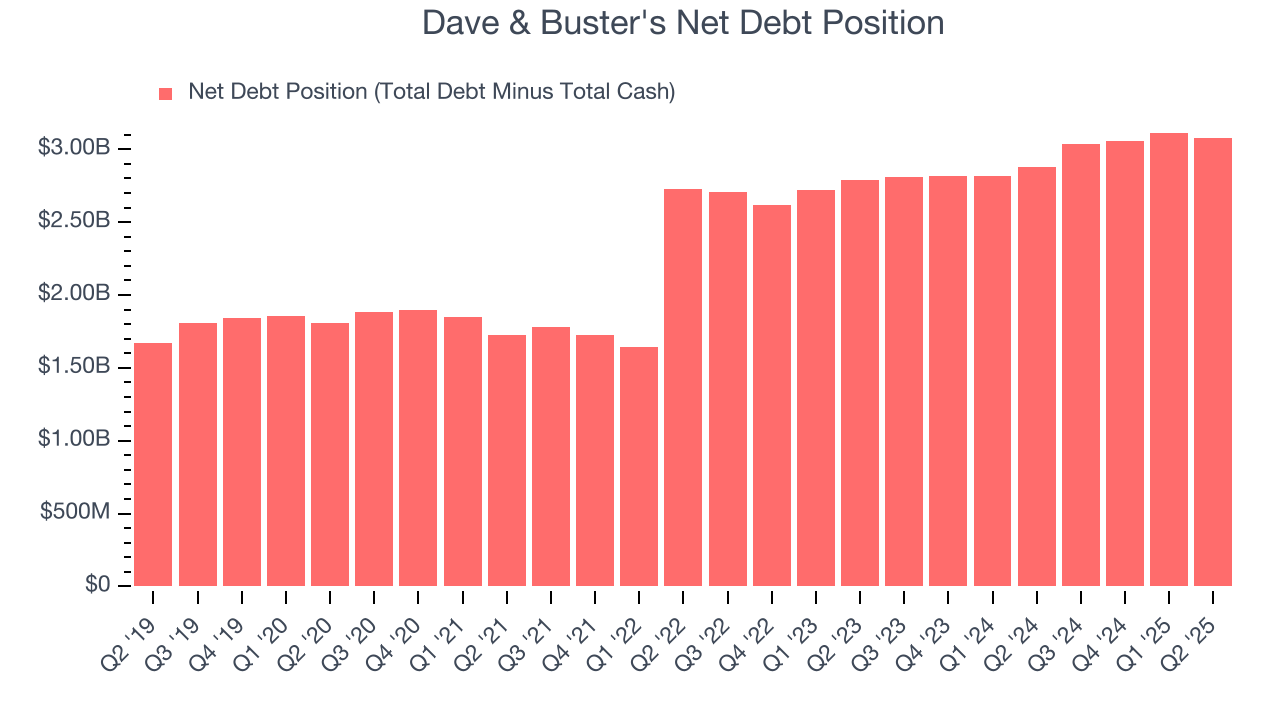
At this level of debt, incremental borrowing becomes increasingly expensive and credit agencies could downgrade the company’s rating if profitability falls. Dave & Buster's could also be backed into a corner if the market turns unexpectedly – a situation we seek to avoid as investors in high-quality companies.
We hope Dave & Buster's can improve its balance sheet and remain cautious until it increases its profitability or pays down its debt.
11. Key Takeaways from Dave & Buster’s Q2 Results
We struggled to find many positives in these results. Its EPS missed and its same-store sales fell slightly short of Wall Street’s estimates. Overall, this was a weaker quarter. The stock traded down 10% to $21.78 immediately following the results.
12. Is Now The Time To Buy Dave & Buster's?
Updated: December 6, 2025 at 10:37 PM EST
We think that the latest earnings result is only one piece of the bigger puzzle. If you’re deciding whether to own Dave & Buster's, you should also grasp the company’s longer-term business quality and valuation.
Dave & Buster's falls short of our quality standards. To kick things off, its revenue growth was weak over the last five years, and analysts expect its demand to deteriorate over the next 12 months. And while its Forecasted free cash flow margin suggests the company will have more capital to invest or return to shareholders next year, the downside is its same-store sales performance has disappointed. On top of that, its projected EPS for the next year is lacking.
Dave & Buster’s P/E ratio based on the next 12 months is 17.8x. This valuation multiple is fair, but we don’t have much confidence in the company. There are more exciting stocks to buy at the moment.
Wall Street analysts have a consensus one-year price target of $27.25 on the company (compared to the current share price of $17.31).
Although the price target is bullish, readers should exercise caution because analysts tend to be overly optimistic. The firms they work for, often big banks, have relationships with companies that extend into fundraising, M&A advisory, and other rewarding business lines. As a result, they typically hesitate to say bad things for fear they will lose out. We at StockStory do not suffer from such conflicts of interest, so we’ll always tell it like it is.



